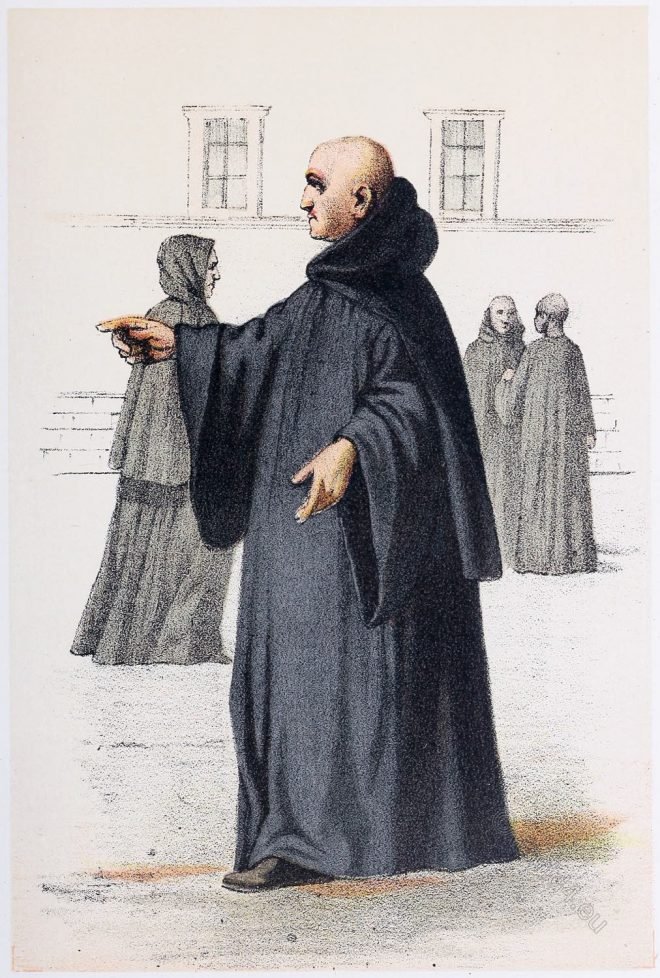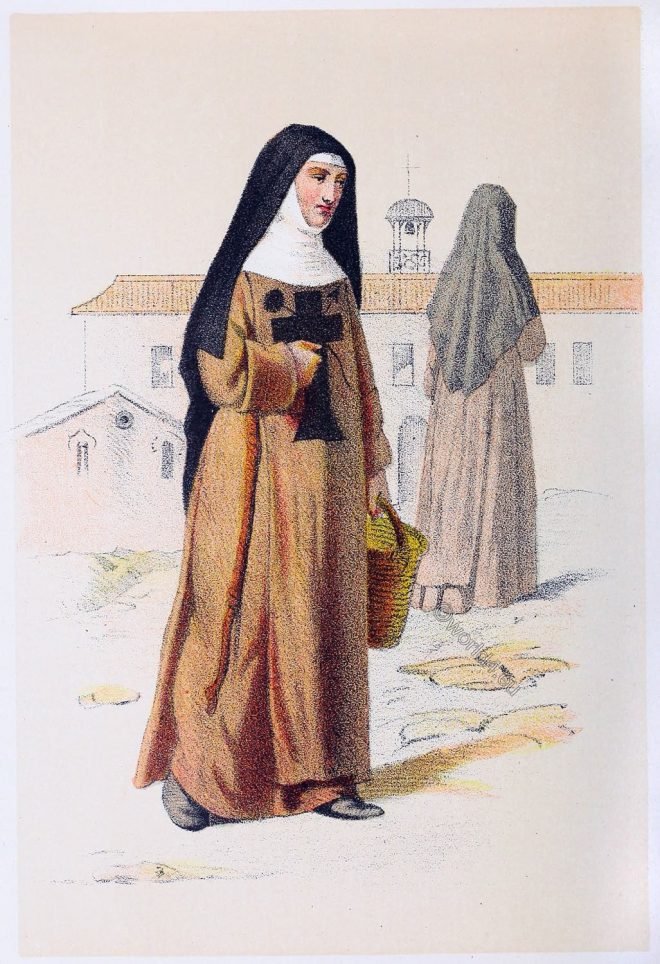St. Benedict. His Rule. The habit of the monks. Propagation of the order. Cluny. Fulda. Bursfeld. English Benedictines. Benedictines in the United States.
Category: Genre
Franciscan Nuns. Congregations of the Third Order of St. Francis.
Franciscan Nuns. Nuns of the Third Order, the Recollectines. The Observantines. The Third Order at Foligny, the Observantines. The Amadeists. The Franciscan Sisters at Heythuizen. The Sisters of Aix-la-Chapelle.
Nuns of the order of St. Benedict. Benedict nuns of the perpetual adoration.
History of Religious Orders. The Abbaye royale Notre-Dame de Fontevraud. Early nuns of the order. Our Lady of Calvary. Benedictine Nuns of Perpetual Adoration of the Blessed Sacrament.
General View of Suez. David Roberts set out from Cairo for the Holy Land.
David Roberts set out from Cairo for the Holy Land on 7 February 1839, with a small caravan including servants in Arabian and Turkish dress
Scene on the Quay of Suez (Egypt) and its future significance.
It is perhaps too early to predict the future importance of the relatively quiet quay of Suez, the direct passage between Europe and Asia through the Red Sea.
Approach to Mount Sinai. Wady Barah. Men resting their camels.
Men resting their camels and smoking by the approach to Mount Sinai. This View is taken from the Encampment at Wady Barah of the Artist and his party.
Travelers at the wells of Moses, or Eyun Musa
Travelers at the wells of Moses, or Eyun Musa, on the eastern side of the Gulf of Suez.
Greek Embroidery. Portion of a rich Fermeli, or upper jacket.
Portion of a rich fermeli, or upper jacket, which was included in a complete suit of elaborate Palikar costume.
The Lamont Harp or Clàrsach Lumanach.
Highland Harp known as the the Lamont Harp or Clàrsach Lumanach.
Convent of St. Catherine with Mount Horeb, Egypt.
The convent of St. Catherine. “The front of Mount Horeb rose like a wall before us, and one can approach quite to the foot, and touch the Mount.”










